python 绘制3D图
1.散点图
代码
# This import registers the 3D projection, but is otherwise unused.from mpl_toolkits.mplot3d import Axes3D # noqa: F401 unused importimport matplotlib.pyplot as pltimport numpy as np# Fixing random state for reproducibilitynp.random.seed(19680801)def randrange(n, vmin, vmax): ''' Helper function to make an array of random numbers having shape (n, ) with each number distributed Uniform(vmin, vmax). ''' return (vmax - vmin)*np.random.rand(n) + vminfig = plt.figure()ax = fig.add_subplot(111, projection='3d')n = 100# For each set of style and range settings, plot n random points in the box# defined by x in [23, 32], y in [0, 100], z in [zlow, zhigh].for m, zlow, zhigh in [('o', -50, -25), ('^', -30, -5)]: xs = randrange(n, 23, 32) ys = randrange(n, 0, 100) zs = randrange(n, zlow, zhigh) ax.scatter(xs, ys, zs, marker=m)ax.set_xlabel('X Label')ax.set_ylabel('Y Label')ax.set_zlabel('Z Label')plt.show()输出:
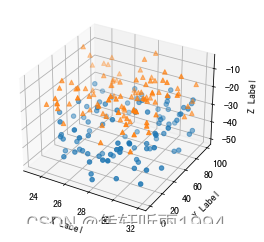
输入的数据格式
这个输入的三个维度要求是三列长度一致的数据,可以理解为3个length相等的list。
用上面的scatter或者下面这段直接plot也可以。
fig = plt.figure()ax = fig.gca(projection='3d')ax.plot(h, z, t, '.', alpha=0.5)plt.show()输出:

2.三维表面 surface
代码
x = [12.7, 12.8, 12.9]y = [1, 2, 3, 4]temp = pd.DataFrame([[7,7,9,9],[2,3,4,5],[1,6,8,7]]).TX,Y = np.meshgrid(x,y) # 形成网格化的数据temp = np.array(temp)fig = plt.figure(figsize=(16, 16))ax = fig.gca(projection='3d')ax.plot_surface(Y,X,temp,rcount=1, cmap=cm.plasma, linewidth=1, antialiased=False,alpha=0.5) #cm.plasmaax.set_xlabel('zone', color='b', fontsize=20)ax.set_ylabel('h2o', color='g', fontsize=20)ax.set_zlabel('Temperature', color='r', fontsize=20)output:

输入的数据格式
这里x和y原本都是一维list,通过np.meshgrid可以将其形成4X3的二维数据,如下图所示:
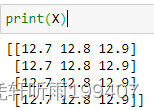
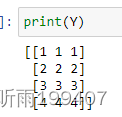
而第三维,得是4X3的2维的数据,才能进行画图
scatter + surface图形展示
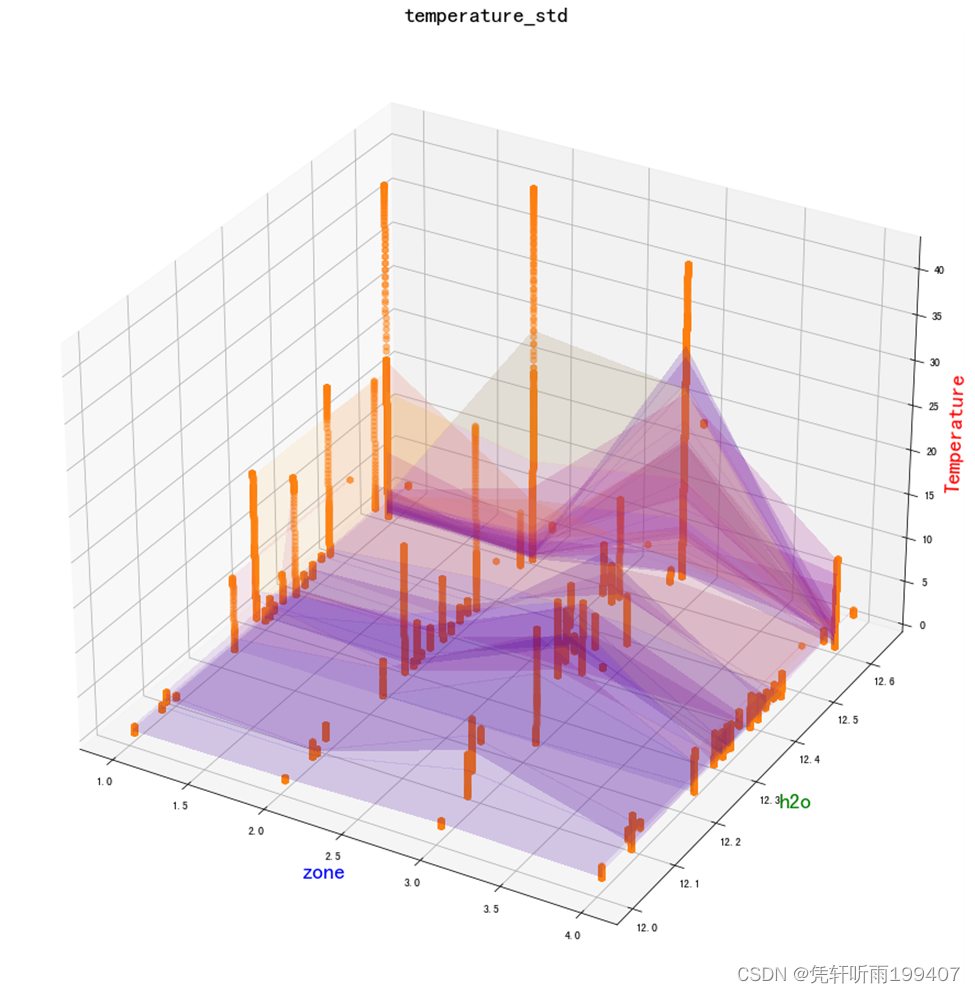
3. 三维瀑布图waterfall
代码
from matplotlib.collections import PolyCollectionimport matplotlib.pyplot as pltfrom matplotlib import colors as mcolorsimport numpy as npaxes=plt.axes(projection="3d")def colors(arg): return mcolors.to_rgba(arg, alpha=0.6)verts = []z1 = [1, 2, 3, 4]x1 = np.arange(0, 10, 0.4)for z in z1: y1 = np.random.rand(len(x1)) y1[0], y1[-1] = 0, 0 verts.append(list(zip(x1, y1)))# print(verts)poly = PolyCollection(verts, facecolors=[colors('r'), colors('g'), colors('b'), colors('y')])poly.set_alpha(0.7)axes.add_collection3d(poly, zs=z1, zdir='y')axes.set_xlabel('X')axes.set_xlim3d(0, 10)axes.set_ylabel('Y')axes.set_ylim3d(-1, 4)axes.set_zlabel('Z')axes.set_zlim3d(0, 1)axes.set_title("3D Waterfall plot")plt.show()输出:

输入的数据格式
这个的输入我还没有完全搞懂,导致我自己暂时不能复现到其他数据,等以后懂了再回来补充。
4. 3d wireframe
code
from mpl_toolkits.mplot3d import axes3dimport matplotlib.pyplot as pltfig, (ax1, ax2) = plt.subplots( 2, 1, figsize=(8, 12), subplot_kw={'projection': '3d'})# Get the test dataX, Y, Z = axes3d.get_test_data(0.05)# Give the first plot only wireframes of the type y = cax1.plot_wireframe(X, Y, Z, rstride=10, cstride=0)ax1.set_title("Column (x) stride set to 0")# Give the second plot only wireframes of the type x = cax2.plot_wireframe(X, Y, Z, rstride=0, cstride=10)ax2.set_title("Row (y) stride set to 0")plt.tight_layout()plt.show()output:

输入的数据格式
与plot_surface的输入格式一样,X,Y原本为一维list,通过np.meshgrid形成网格化数据。Z为二维数据。其中注意调节rstride、cstride这两个值实现行列间隔的调整。
自己试了下:
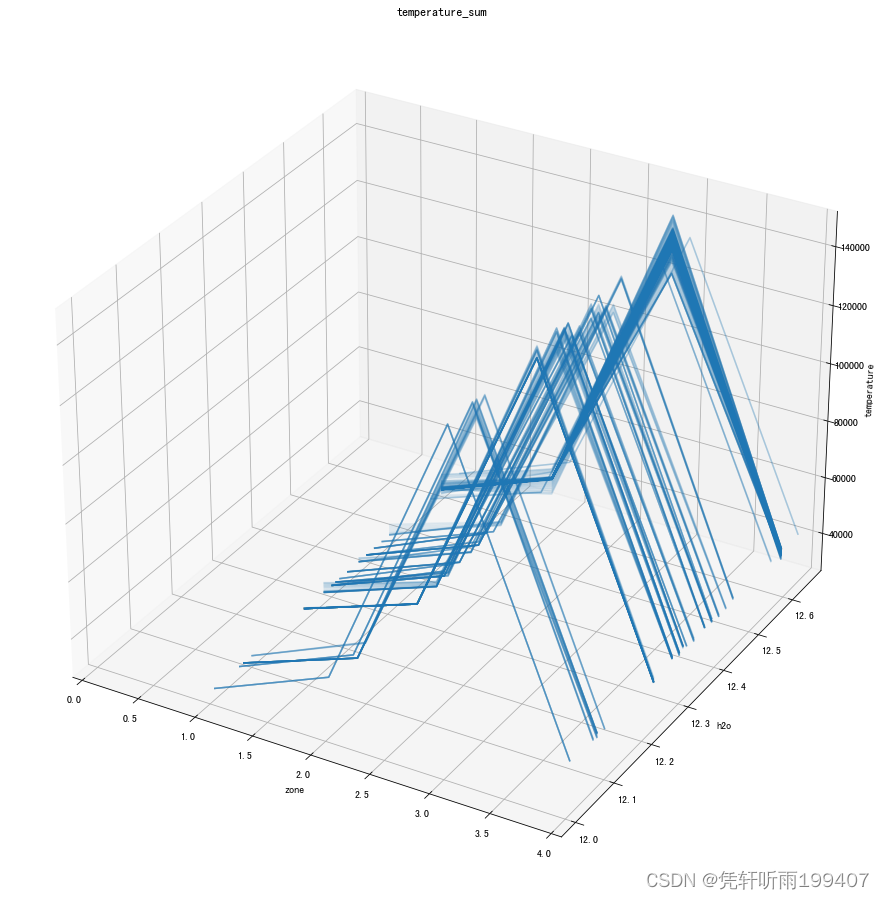
reference:
https://matplotlib.org/stable/gallery/mplot3d/hist3d.html
来源地址:https://blog.csdn.net/weixin_46870583/article/details/125318214




